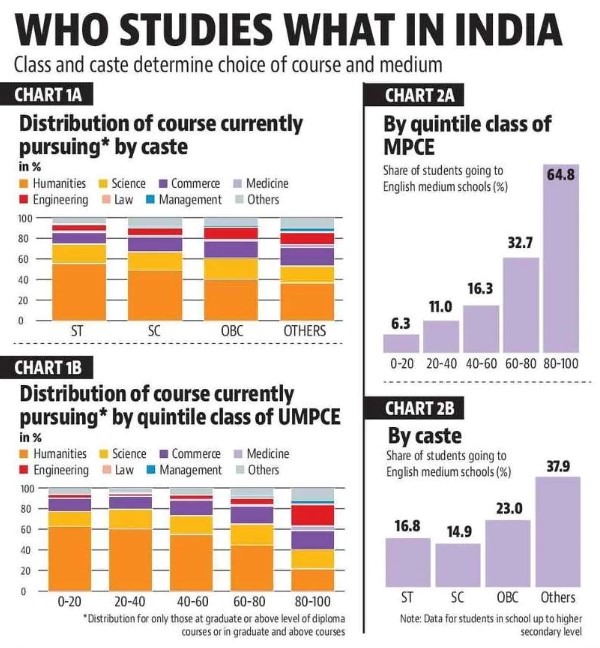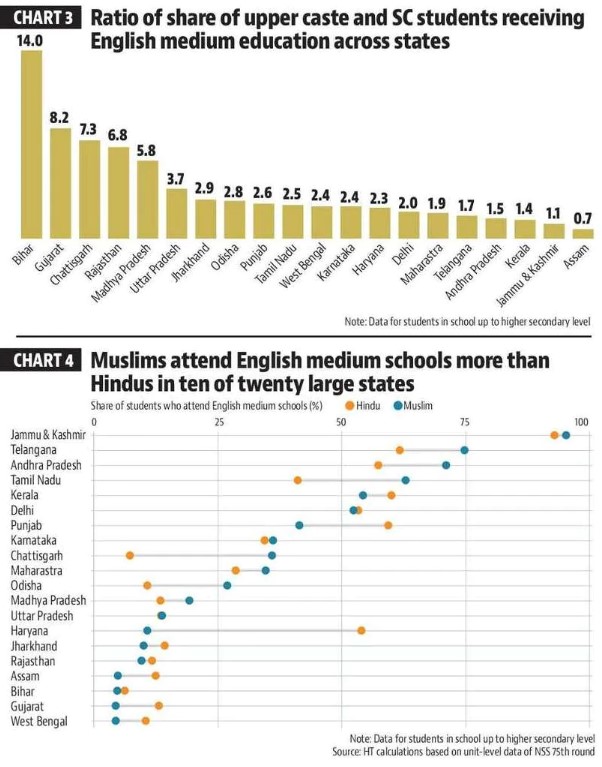Focus: GS-II Social Justice
Why in news?
- The government released the New Education Policy after a gap of 34 years.
- Among other things the NEP seeks to encourage school education in mother tongue.
- Data from a recently released National Statistical Office (NSO) survey on education, which was conducted in 2017-18 shows that India’s education landscape has massive inequalities.
Imparting English Medium Education
- There is a deep aspiration for imparting English medium education to children, access to which continues to remain unequal.
- Those at the bottom of the socio-economic ladder are more likely to be studying humanities than a professional course.
- Those at the bottom of the socio-economic ladder are also much less likely to have access to English medium education.
- Girls are less likely to be getting English medium education than boys, and more women take up humanities than men in India.
- Differences in geographical location can increase or decrease these inequalities.
- The commonly held belief that most Muslims send their children to Madrasas (religious seminaries) and not proper schools is a myth which is NOT supported by data.
- In 10 out of 20 large states, the number of Muslims attending English-medium schools, expressed as a proportion of all Muslims attending schools is higher than the corresponding proportion for Hindus.
- Interestingly, even India’s poorest and socially most deprived parents are doing all they can, including spending beyond their means, to send their children to English-medium schools.
- There is a very high aspiration for English-medium education, even among the poorest.

India’s education landscape is extremely unequal
- Students from the richest 20% of the society are seventeen times more likely to be studying law than those from the poorest 20%.
- And a student who does not belong to another backward class (OBC), scheduled class (SC) or scheduled tribe (ST) is six times more likely to be studying management than a Scheduled Tribe (ST) student in India.
- To be sure, both humanities and non-English medium education are the most common among Indian students.
Across States
- Just 6% students were receiving English medium education in Bihar. This number is 63% in Telangana and 95% in Jammu and Kashmir.
- The erstwhile state of Jammu and Kashmir, India’s only Muslim majority state, has the highest prevalence of English medium education in the country.

-Source: Hindustan Times



